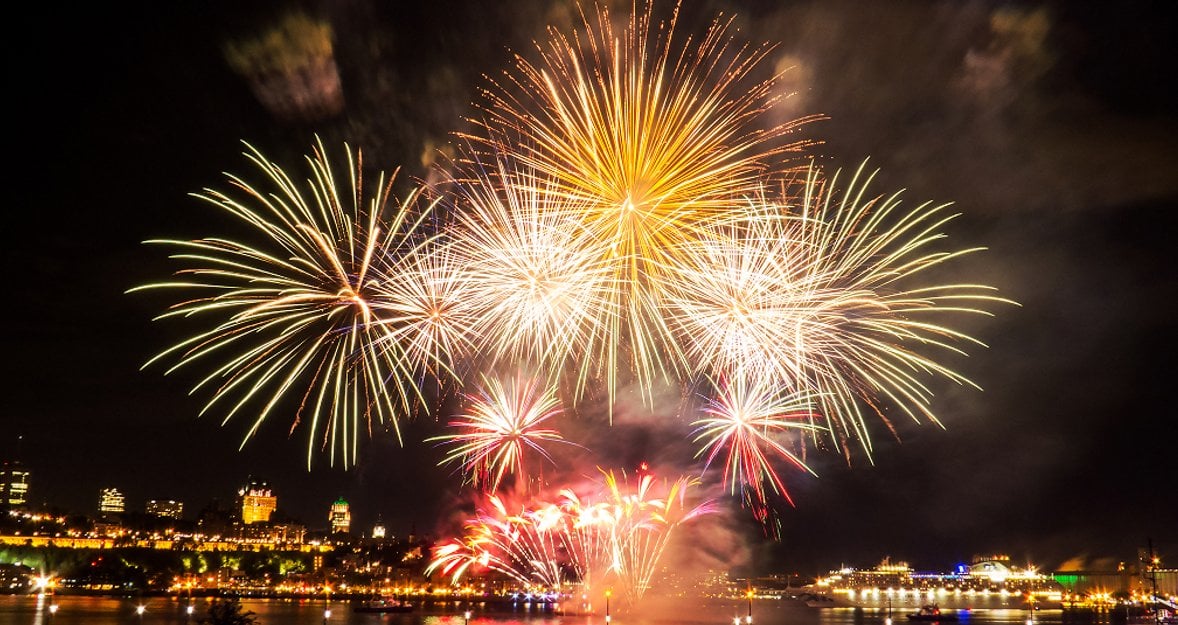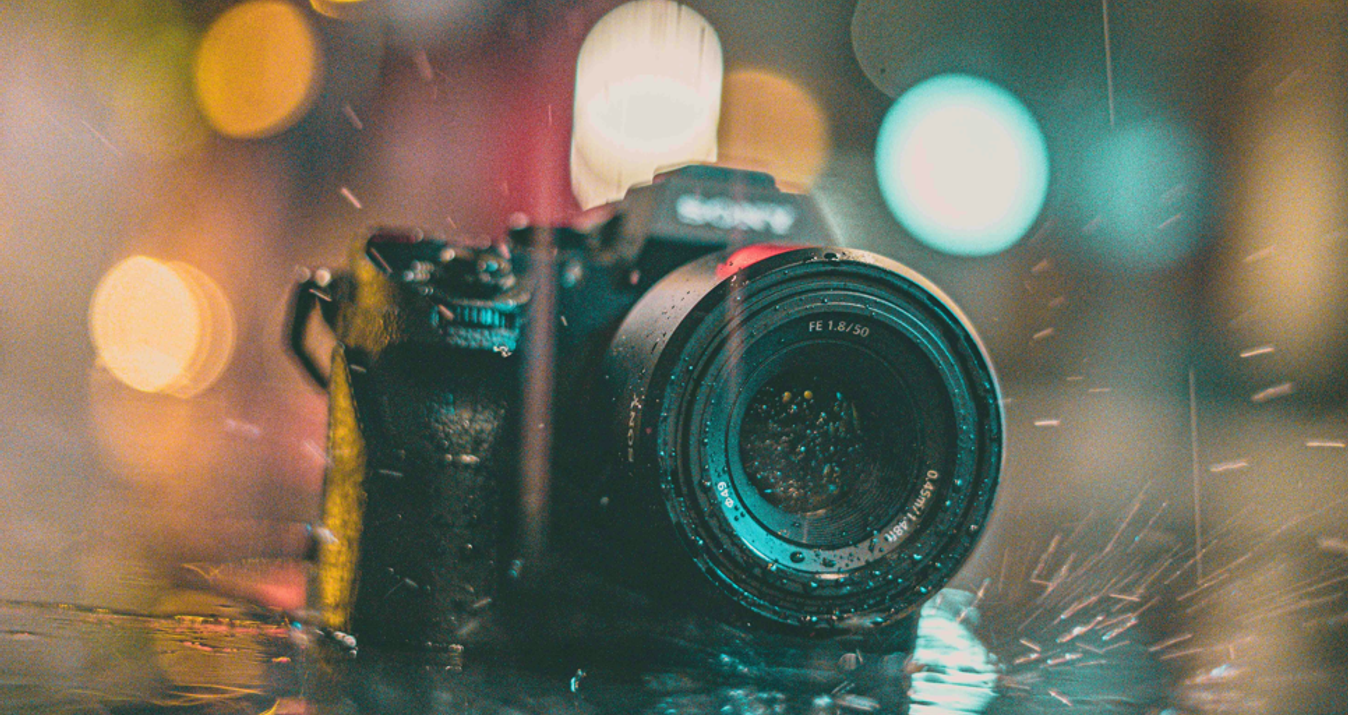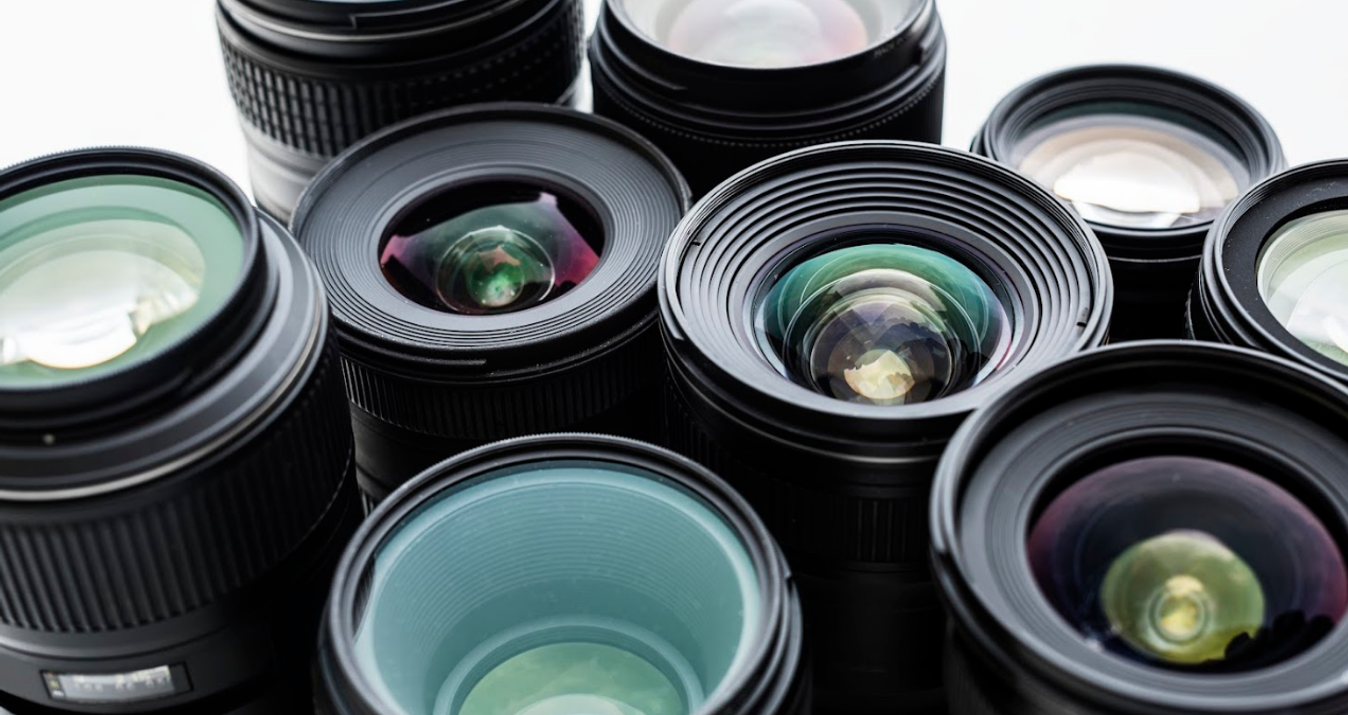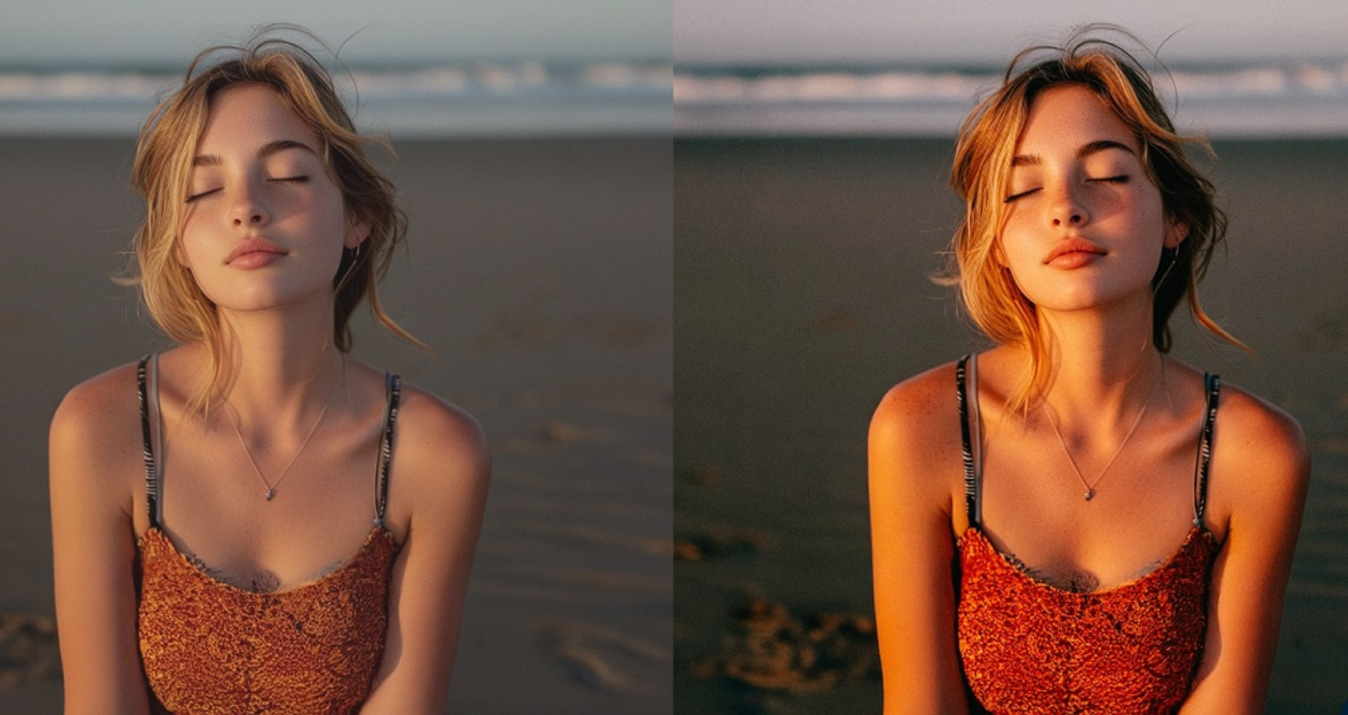How to Photograph Fireworks: Master Firework Photography
Last Updated on July 09, 2025

Fireworks don’t have to be hard to photograph! Learn how to shoot them like a pro, avoid common mistakes, and make your photos pop.
Everyone associates fireworks with a holiday, the end of which is these colorful and bright flashes in the sky. They cause a lot of positive emotions and almost never negative ones; they are always about joy, fun, a great time, and happiness. Everyone wants to capture this moment in memory and in the gallery of their phone, but the photos are not always as beautiful as we would like them to be. All because these colorful flashes require a special technique. Now we will analyze the peculiarities of shooting, step-by-step instructions, common mistakes, and some tips, tell you about free Mac photo editor, and answer the question “How to photograph fireworks?”.
Basic Equipment for Shooting Fireworks
The basic equipment for shooting fireworks is not really that much; you will need a tripod, a cable release, a lens, the camera itself, and optional filters. Shooting takes time, so stock up on patience and tea.
Tips for Choosing a Camera
 For fireworks pictures, a DSLR or mirrorless camera with manual adjustment is best. Ensure it has a Bulb mode, allowing you to adjust the shutter speed. A good camera should provide a good high ISO without excessive noise. This also depends on the sensor size; full-frame cameras offer better quality in the dark, but cropped cameras can also handle this with the right settings. In this case, it is advisable to choose a model with controls that you are comfortable with, as you will have to change settings quickly. You don't have to bring the best camera — even older versions of professional cameras can capture fireworks perfectly. The most important thing is to learn the settings and learn how to work with them.
For fireworks pictures, a DSLR or mirrorless camera with manual adjustment is best. Ensure it has a Bulb mode, allowing you to adjust the shutter speed. A good camera should provide a good high ISO without excessive noise. This also depends on the sensor size; full-frame cameras offer better quality in the dark, but cropped cameras can also handle this with the right settings. In this case, it is advisable to choose a model with controls that you are comfortable with, as you will have to change settings quickly. You don't have to bring the best camera — even older versions of professional cameras can capture fireworks perfectly. The most important thing is to learn the settings and learn how to work with them.
Best Lenses for Shooting
 The choice depends on the shooting conditions and your creative goals; 16-35 mm wide-angle focal lenses are considered the best choice. They will help you shoot fireworks and capture the beautiful landscape in the background, creating a complex composition. When shooting at a distance, a focal length of 24-70 mm is suitable, providing a moderate field of view without distortion.
The choice depends on the shooting conditions and your creative goals; 16-35 mm wide-angle focal lenses are considered the best choice. They will help you shoot fireworks and capture the beautiful landscape in the background, creating a complex composition. When shooting at a distance, a focal length of 24-70 mm is suitable, providing a moderate field of view without distortion.
The aperture ratio is not a concern, as you use closed apertures (f/8-f/11) to increase sharpness. Chromatic aberration is an optical defect in which the lens fails to converge rays of different colors to a single point properly. Its absence and good quality also matter — cheap lenses are prone to flare and colored halos around bright light sources. Briefly about what lenses will suit you:
wide-angle (16-35 mm);
universal zoom (24-70 mm);
fx-lenses.
Wide-angle will allow you to photograph your surroundings, a universal is suitable for detailed shots, and FX lenses will not work against you if you know exactly the distance to the subject.
Your AI-Powered Photo Editor for MacOS and Windows
Discover Now!Why a Tripod is Essential for Clear Photos of Fireworks
 When shooting fireworks, exposures of 1 to 10 seconds, and sometimes more, are required. The slightest movement of the camera in your hands will give a blurry effect of the lights or a fuzzy image. The camera is fixed to a tripod, eliminating the possibility of movement. This is necessary during dark hours when the camera needs more time to get light. Sharp and beautiful fireworks tracks cannot be made without a tripod, especially if you are using a zoom or heavy rig.
When shooting fireworks, exposures of 1 to 10 seconds, and sometimes more, are required. The slightest movement of the camera in your hands will give a blurry effect of the lights or a fuzzy image. The camera is fixed to a tripod, eliminating the possibility of movement. This is necessary during dark hours when the camera needs more time to get light. Sharp and beautiful fireworks tracks cannot be made without a tripod, especially if you are using a zoom or heavy rig.
Useful Accessories for Shooting Fireworks
 You'll be using a remote control or trigger cable to take pictures, which won't touch the camera body and, therefore, won't create vibrations. Memory cards and spare batteries will also come in handy, as it can be a long time before you're done shooting, and batteries drain faster in cold weather. A mini flashlight with a red light will come in handy when you're adjusting settings in the dark without obstructing your vision at night. What other things might you need:
You'll be using a remote control or trigger cable to take pictures, which won't touch the camera body and, therefore, won't create vibrations. Memory cards and spare batteries will also come in handy, as it can be a long time before you're done shooting, and batteries drain faster in cold weather. A mini flashlight with a red light will come in handy when you're adjusting settings in the dark without obstructing your vision at night. What other things might you need:
a rain cover for your camera;
folding chair with a low back;
spare lens caps;
small screwdriver.
You won't regret the chair; sitting on the ground is not a good idea, lens caps get lost quickly, and the screwdriver comes in handy for tightening tripod mounts.
The Best Camera Settings for Shooting Fireworks
 Unfavorable exposure of bright flashes against a dark background can hinder the taking of beautiful photos. The dynamics and beauty of the lights can be captured with the right combination of settings.
Unfavorable exposure of bright flashes against a dark background can hinder the taking of beautiful photos. The dynamics and beauty of the lights can be captured with the right combination of settings.
ISO settings. A low setting (100-400) should be used to eliminate noise. Fireworks are already bright on their own, so high values are not necessary. This will make the photo clean and detailed.
Aperture. Reduce it to f/8-F/11. This will increase the depth of the field, and the trails of lights will be clear. An aperture that is too open can lead to overlighting.
Shutter speed. It should be long (2-10 seconds). This will make the sparklers clearer. You can shorten the time on smaller fireworks and increase the time on larger patterns.
Focusing. Set up the lens by turning on manual focus. Pre-focus at infinity or in the direction the fireworks will be shooting out from. Autofocus is often inaccurate in low-light conditions.
Bulb mode allows you to control the shutter speed manually. You need to press the shutter release button at the moment of the burst and release it after the flash has finished getting it right.
Image Format. Shoot in RAW so that you have the freedom to post-process. This format has the best detail in shadows and highlights. JPEG is fine if you're not going to heavily edit the photo.
By following these camera setup tips, your fireworks photo will always be vibrant and impressive.
Step-by-Step Guide: How to Photograph Fireworks like a Pro
 By following this plan, you will be able to get impressive pictures; the main thing is to control the process and not be deceived by the details.
By following this plan, you will be able to get impressive pictures; the main thing is to control the process and not be deceived by the details.
Step 1: Be Prepared for Fireworks
Find out where the fireworks are being held. Find out which way the wind is blowing, as smoke can ruin your shots. It's a good time to look at the weather and stock up on rain gear. Get there at least an hour or two before the start so you can get a seat without interference.
Step 2. Set Up Your camera and Tripod
Select a stable surface on which to place your tripod. Set up the camera level with no backlash. A heavy lens is very prone to imbalance. Watch out for this. Make sure the structure can withstand jolts in a crowd. Set up your tripod so that you can quickly change the composition.
Step 3: Photograph Fireworks with Foreground and Background in Mind
When the show is underway, prepare the composition. The architecture or silhouette of people will create the scale. Always leave the area where the explosions will occur in the frame — fireworks usually stand taller than they appear. Look at the horizon and observe it with a grid in the viewfinder. If you find the background only distracting, you can use the Remove Background From Image function.
Step 4. Apply the Remote Shutter Release to Minimize Camera Vibrations
Before you begin, connect the remote control or cable. Make sure it is compatible with your camera model. In the case of DSLR cameras, turn on the mirror pre-lift. If you do not have a remote, use a 2-second delay timer. This is to ensure that there is no jiggling when you press it.
Step 5. The Best Fireworks Series Should Also be Launched at the Right Time
Start shooting at the moment of launch — the first volleys are the best. Keep up with the progress of the action and prepare for the climaxes. Do a series of 3–5 shots with different settings. In the pauses between shots, study the histogram and make the exposure.
Step 6: Experiment with Angles and Perspective
Try shooting from lower points — this will add drama. A wide-angle will reflect scale, and a telephoto lens will reflect individual details. For diagonal compositions, rotate the camera on a tripod. For social media, take vertical shots.
Step 7: Set Up and Test Shots between Fireworks
Check sharpness when zooming. Evaluate overnighting in the histogram. Adjust the shutter speed if the tracks are too short or too long. To free up space, delete the unfortunate footage that you can see. Change settings in steps.
Now your professionalism is given away by the shots you take and the actions you think ahead. And photo editing software for beginners will help beginners learn how to deal with complex situations.
Tips for Creating Unique Fireworks Photos
Pictures of fireworks require technical skills and creativity. These tips will tell you how to make your shots truly original.
- Use reflections to make your shots more colorful. Look for moisture, bodies of water, wet sidewalks, or the glass surface of a building that can reflect the fireworks. This will double the visual impact and symmetry of the shot. The most effective shots are those in which the reflection occupies the lower part of the composition, creating a balance between the sky and its mirrored version.
- Introducing a silhouette in a dramatic fireworks photograph. Figures, trees, or some architectural details appear as silhouettes in the foreground, creating a strong contrast with the flashes of light in the sky. This texture adds richness and feeling to the photo. Try inserting a familiar silhouette of a city; this allows the visitor to realize the scale of the event.
- Take several series of composite photos. Take 3-5 shots with small adjustments to the settings in each frame. This will increase the likelihood of getting the perfect shot where the shape of the explosion, the location in the frame, and the composition of the shot are not incorrect. You will then have the opportunity to select the best firework photography or make a collage.
- Play with the zoom while shooting fireworks. Try to move the focal length smoothly with a slow shutter speed (2-4 seconds). This will give the impression of exploding rays that originate in the center of the panel. A zoom lens with a manual ring should be used for this method.
- Experiment with different compositions: wide-angle and close-up shots. Combine general shots that allow you to see the full scale of the show with close-ups of individual flashes. With a wide-angle lens (16-35 mm), you can create a pinhole panorama, and with a telephoto lens (70-200 mm), you're more likely to highlight individual elements of the fireworks.
Typical Mistakes to Avoid when Shooting Fireworks
Even experienced photographers can make mistakes when shooting fireworks. Knowing these common problems will allow you to avoid them.
1. Equipment-Related Mistakes
Poor Equipment Preparation
Decide on the composition in advance and prepare the necessary equipment. Changing lenses in the dark at a trade show is fraught with errors, resulting in poor picture quality, and dust can accumulate on the sensor.
Also, use a lens protector. When taking night sky photos with fireworks, hot ash particles can leave invisible scratches on the lens, and condensation from temperature extremes can leave stains on the front glass. It is useless to clean the lens in the field, as it may become dirty again.
Not Monitoring Battery
Do not monitor the percentage of charge. Lithium-ion batteries lose up to 30 percent of their capacity at +5°C and discharge instantly. The remaining 20 percent charge can disappear in a couple of minutes while you're shooting. At the climax, the camera will simply turn off.
No Remote Control
You do not need a remote control to shoot. Microscopic variations of each shutter release push caused by the button at long exposure speeds become a perceptible blur. Even the 2-second self-timer delay is too late — the main part of the fireworks opening is already lost. The lack of a remote control means that there is no way of matching the start of the shutter speed with that of when the rocket is launched. With telephoto lenses, particularly, any vibration is magnified many times.
Shooting Handheld or with Stabilization On
Shooting handheld will, in any case, create vibrations that will turn clean lines of light into blurred ones. Using a long shutter without locking the camera will lead to blurring. Placing the camera on an uneven surface will never give you the stability you need.
When shooting on a tripod, the stabilization system remains unactivated, which creates micro-vibrations. These vibrations are transmitted through the mount to the camera body. The stabilization mechanism, which is programmed to work by counteracting the movements of your hands, begins to “hunt” for shakes that are not there. As a result, at slow shutter speeds, you get tiny but deep blur elements rather than the expected sharpness.
2. Settings-Related Mistakes
Autofocus and ISO Mistakes
Autofocus may not function properly in low-light conditions. Focus at an infinite distance or pre-focus on a point where you think you will see the fireworks. Also, avoid setting ISO too high — fireworks are bright enough. Use ISO 100-400 to reduce digital noise and preserve detail.
White Balance and Aperture Issues
Using automatic white balance leads to inconsistent colors across your series. Switch to manual white balance to retain natural color tones. Also, avoid using too wide an aperture (like f/2.8-f/4), which causes loss of sharpness on the edges, color blobs, and chromatic aberrations. Aim for a balanced depth of field to keep both low and high salvos in focus.
Shutter Speed Too Long
Shutter speeds that are too long (i.e., longer than a few seconds) will result in streaking, characterized by bright streaks that overlap to form a large, white spot. Shutter speeds slower than 1 second will not capture the full arc of light. Initially, set the shutter speed to 4-6 seconds and adjust it as needed based on the results.
Only Shooting in JPEG
You only shoot in JPEG format. Raw is automatically compressed by the camera, and a lot of light is lost. When processing, even the best software for picture editing won't improve the situation because details are lost in shadows and highlights that can't be brought back. Correction of overlighting and underexposure becomes almost impossible because of the 8-bit color space. Sky color gradients can produce step changes (banding). Trying to make shadows lighter will result in color artifacts and more noise. The preset white balance determined by the camera cannot be changed without loss of quality.
3. Composition-Related Mistakes
No Context in the Frame
Without any context, fireworks are like an abstract image. Place a familiar object in the frame — a city, a group of observers, or objects in nature. This gives the impression that the event has a place and scale. HDR processing is especially useful here: it can help preserve detail in both bright flashes and darkened foreground objects, combining them into a harmonious shot.
Ignoring Smoke Direction
You don't take into account the direction of the smoke from the fireworks. If it goes directly in front of the camera, the focus may be off. Puffs of thick smoke will make your pictures cloudy, and contrast will be reduced. The wind can blow in the wrong direction at any time, impairing visibility at crucial moments. At slow shutter speeds, you may notice smoke that looks like light spots. In calm weather, the smoke remains stationary, completely obscuring the view.
Overlooking the Foreground
You overlook the foreground. The shot would have no depth and perspective without the existence of a meaningful living object at the bottom of the frame. Fireworks waving in the skies of nothingness resemble computerized images and are unrelated to the real world. A natural framework of the composition is made by architectural elements or natural objects in the foreground. The spectators of the fireworks provide emotion and size to the shot.
Ignoring the Moon Phases
You don't take into account the phases of the moon. The full moon acts like a giant softbox, flooding the sky with diffused light and "washing out" the darkness needed to contrast with fireworks. On moonlit nights, the bright flashes of fireworks lose their spectacularity, merging with the illuminated sky. Moonlight creates a parasitic backlight, reducing the saturation of the colors of fireworks. This is especially strong at slow shutter speeds when the camera has time to capture both moonlight and artificial light.
Using Luminar Neo to Edit Fireworks Photos like a Pro
 Once you've come home with a lot of photos you've taken, it's worth considering where best to process them. If you haven't found the right companion for you yet, Luminar Neo is worth checking out. Here are the tools you can use to make your fireworks photography several times better.
Once you've come home with a lot of photos you've taken, it's worth considering where best to process them. If you haven't found the right companion for you yet, Luminar Neo is worth checking out. Here are the tools you can use to make your fireworks photography several times better.
Exclusive Tools of Endless Possibilities in One AI Editor
Explore Now!AI Enhance. Automatic optimization of light and shadows.
Color tab. Enhances the hues of fireworks without overlighting.
AI Denoise. Removes graininess at high ISOs while preserving detail.
AI Sharpening. Improves the detail of fire tracks.
Mystical. Adds a light glow.
AI Skin & Portrait. If there are people in the frame.
Vignette. Focuses attention on the main subject.
Do not forget about the function of Sky Replace. It is relevant in the theme of shooting fireworks. The advanced AI editor will greatly simplify complex processing, enabling even beginners to create professional shots.
Capture the Atmosphere
Real professionalism in fireworks photos is the ability to convey the emotions and atmosphere of the moment. We have analyzed a lot of mistakes that photographers make when creating such pictures. We have analyzed the step-by-step instructions to help you feel more confident and avoid mistakes. Additionally, we have answered all the questions you may have had regarding the photo of fireworks; you only need to apply the knowledge you have gained.





